|
A Traditional Solemn High Mass will be celebrated for the feast of Blessed Karl at St. Mary, Mother of God Catholic Church in Washington, DC at 7:00 PM, Wednesday 21 October 2015 followed by veneration of a First Class Relic of Blessed Karl. At a reception immediately following we will be blessed to have as our guest of honor Her Imperial and Royal Highness, Princess Maria-Anna Galitzine, Archduchess of Austria and Grand-daughter of Blessed Karl. See details below or for more info email [email protected] |
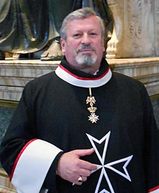
Raymond de Souza, KM – Knight of Magistral Grace of the Sovereign and Military Order of Malta, President of the Sacred Heart Institute, Inc., and member of the Board of Advisors of Christendom Restoration Society, has produced a series of video appeals in support of the international “Filial Appeal to Pope Francis on the Future of the Family.” This online petition respectfully asks the Holy Father to reaffirm categorically the Catholic teaching that divorced and civilly remarried Catholics cannot receive Holy Communion and that homosexual unions are contrary to Divine and natural law. More than 500,000 people have already signed the Appeal including numerous cardinals, archbishops and pro-life and pro-family leaders worldwide.
View a video and be sure to click on the Appeal button near the bottom of this post. Filial Appeal Videos in Various Languages
Raymond de Souza, KM, is a member of the Christendom Restoration Society's Board of Advisors. He is Brazilian by birth, Catholic by grace and American by choice. He is the President of the Sacred Heart Institute in the United States; EWTN program Host; Knight of Magistral Grace of the Sovereign Military Order of Malta; Coordinator of the Knights of the Sacred Heart Legion and Executive Secretary of Tradition Family Property – New Zealand.
He has distinguished himself as an international Catholic Apologist, author, broadcaster and Pro-Life activist. Fluent in English, Spanish, French and Portuguese and also having conversational ability in Italian and Afrikaans, he has given over 2,500 talks on issues of Evangelization and Apologetics, Pro-Life and related topics, in person, on radio and television. His work has assisted education programs at parishes, schools, and lay organizations in 15 countries of five continents. He has a syndicated weekly column on Catholic Apologetics in the national Catholic newspaper, the Wanderer. Raymond de Souza is available to speak at Evangelization and Pro-Life events anywhere in the Free World. Click here for Letters of Recommendation from Clergy and Laity in the United States, Australia, and New Zealand. Contact: [email protected] or [email protected] or PO Box 1144, Rochester, MN 55903 USA.
Credo in Unam, Sanctam, Catholicam et Apostolicam Ecclesiam
Ubi Petrus, ibi Ecclesia; ubi Ecclesia, ibi Christus
Your personal invitation and a special message from Raymond de Souza Dear Friends, You are certainly aware of the current debate in the Church today provoked by anti-family pundits who demand that active homosexuals and the divorced and remarried without annulment be admit to the reception of the Holy Eucharist. Many Catholics – not only among the laity – are influenced by a false, relativistic understanding of “mercy” and ignore that fact that we must please God before we please men. There is too much ambiguity in some Catholic circles on this issue, and clarity is sorely needed. Joseph Cardinal Ratzinger said once that “Ambiguity is the mark of the demonic” (‘The Ratzinger Report’, Ignatius Press, p. 150). In our New Evangelization work to defend the Faith, Life, and Family we often come across situations in which it becomes necessary not only to defend truth but also to refute error. The great Pope Pius XII taught that, "The Church, ever overflowing with charity and kindness toward those who go astray, but faithful to the word of Her Divine Founder, who said: 'He that is not with me is against me' (Matt. 12:30) could not fail in Her duty of denouncing error and unmasking the sowers of lies. . ."(1) His predecessor Pius XI expressed the same thought as follows: "The first gift of love of the priest to his milieu, and which is incumbent upon him in the most evident manner, is the gift of serving truth, the whole truth, and to unmask and refute error under all the forms, masks, and disguises in which it is presented."(2) John Paul II taught that “It is essential to develop a new apologetic for your people, so that they may understand what the Church teaches and thus be able to give reason for their hope (cf. 1 Pt 3:15). For in a world where people are continuously subjected to the cultural and ideological pressure of the media and the aggressively anti-Catholic attitude of many sects, it is essential for Catholics to know what the Church teaches, to understand that teaching, and to experience its liberating power. A lack of understanding leads to a lack of the spiritual energy needed for Christian living and the work of evangelization" (3) Benedict XVI denounced the “dictatorship of relativism” (4) and Francis echoed him by alerting them to the danger of the "Tyranny of relativism" (5). Also please forward this blog post to friends who may be interested in the defense of the Faith, Life, and Family, encouraging them to register and attend the webinar as well. Thank you very much for your cooperation in this new exciting venture of the New Evangelization! Yours cordially, in the Sacred Heart of Christ the King, Raymond de Souza, KM President, Sacred Heart Institute
http://www.raymonddesouza.com/lifelines.htm http://www.prolifeknights.com
(1) (Christmas Radio Message of 1947, "Discorsi e Radiomessagi," Vol. IX, p.393). (2) (Encyclical "Mit Brennender Sorge" of March 14, 1937. AAS, Vol. XXIX, p. 1 , 63). (3) (Address to the Bishops of the Antilles, Tuesday, 7 May 2002). (4) (Homily at the Mass of the Conclave). (5) (Address to the Diplomatic Corps, March 22, 2013).
Last week, Rorate Caeli interviewed Raymond Cardinal Burke via telephone on numerous topics. Nothing was off the table for this interview and His Eminence was incredibly generous with his time. He showed himself to be brilliant and yet filled with humility. And his care and concern for traditional Catholics must be acknowledged and appreciated. In this wide-ranging interview, His Eminence talked about issues ripped from the news such as: Vatican officials threatening to sue bloggers; more priests coming under his authority; the dismantling of the Franciscans of the Immaculate; how traditional Catholics can save their souls in this modern world -- and get their children the sacraments in the traditional rite in the face of dissenting bishops; priestly celibacy; daily confusion from Pope Francis; and much, much more. VATICAN OFFICIALS THREATENING TO SUE BLOGGERS Rorate Caeli: Your Eminence, thank you very much for agreeing to this interview. As the most-read international blog for traditional Catholics, we believe this will give much hope to our readership, and to traditional-minded Catholics everywhere. For our first question: The traditional world, recently, has been stunned by the news that two officials of the Vatican have threatened to sue traditional-minded Catholic bloggers and reporters. Do you agree with this approach, and do think we should expect to see more of this in the future? Card. Burke: Unless the blogger has committed a calumny on someone's good name unjustly, I certainly don't think that that's the way we as Catholics should deal with these matters. I think contact should be made. I presume that the Catholic blogger is in good faith, and if there's someone in the hierarchy who is upset with him, the way to deal with it would be first to approach the person directly and try to resolve the matter in that way. Our Lord in the Gospel and St. Paul in his First Letter to the Corinthians instruct us not to take our disputes to the civil forum, that we should be able, as Catholics, to resolve these matters among ourselves. (cf. Mt. 18:15; 1 Cor. 6:1-6) CONFUSION FROM POPE FRANCIS Rorate Caeli: After eight years under Pope Benedict XVI, clergy, laymen, even the media became accustomed to clarity. With so much confusion stemming from the daily statements of Pope Francis, confusion from the Synod, et cetera, is it best to focus more on the local and parish level and on the Church's tradition, rather than looking for specific guidance from Rome on issues of the day? Card. Burke: Yes, I think that, in fact, Pope Francis himself has given that indication. For instance in his Apostolic Exhortation, Evangelii Gaudium, he says that he doesn't consider it to be a magisterial teaching. (n. 16) With someone like Pope Benedict XVI, we had a master teacher who was giving us extended catechesis on various subjects. I now say to people that, if they are experiencing some confusion from the method of teaching of Pope Francis, the important thing is to turn to the catechism and to what the Church has always taught, and to teach that, to foster it at the parish level, beginning first with the family. We can't lose our energy being frustrated over something that we think we should be receiving and we're not. Instead, we know for sure what the Church has always taught, and we need to rely on that and concentrate our attention on that. COMMUNION FOR ADULTERERS & ATTACK ON DOCTRINE Rorate Caeli: Speaking of that teaching and what we're hearing, you've made news lately by saying you will resist any teaching that's heterodox on marriage, and that Catholics should fight back, which gets to a whole other question we were asking about. What should be the response of faithful Catholics if there is a change in the discipline in regards to Holy Communion for divorced and remarried adulterers? Card. Burke: I was answering a hypothetical question. Some people have tried to interpret it as an attack on Pope Francis, which it wasn't at all. It was a hypothetical question posed to me, and I simply said, "No authority can command us to act against the truth, and, at the same time, when the truth is under any kind of threat, we have to fight for it." That's what I meant when I said that. When the hypothetical question was put to me, "What if this agenda is pushed?" I said, "Well, I simply have to resist it. That's my duty." Rorate Caeli: How can a faithful Catholic fight back? Is it in his home? Is it on a blog? Card Burke: I think you have to keep teaching, in your home and in your own personal life, to hold to the truth of the faith as you know it, and also to speak up about it and to make known to the Holy Father your deep concern, that in fact you cannot accept a change in the Church's discipline which would amount to a change in her teaching on the indissolubility of marriage. Here I think it's very important to address a false dichotomy that's been drawn by some who say, "Oh no, we're just changing disciplines. We're not touching the Church's doctrine." But if you change the Church's discipline with regard to access to Holy Communion by those who are living in adultery, then surely you are changing the Church's doctrine on adultery. You're saying that, in some circumstances, adultery is permissible and even good, if people can live in adultery and still receive the sacraments. That is a very serious matter, and Catholics have to insist that the Church's discipline not be changed in some way which would in fact, weakens our teaching on one of the most fundamental truths, the truth about marriage and the family. DISSENTING BISHOPS & SUMMORUM PONTIFICUM Rorate Caeli: Getting to something that's right in Your Eminence’s wheelhouse, how do we fulfill the promise and the mandate of Summorum Pontificum at this particular time in the Church, and what role does Canon Law play in making the traditional Latin Mass available in every parish? Card. Burke: The law stands as it was given by Pope Benedict XVI, and it has not been changed. The document for its implementation was issued by the Pontifical Commission Ecclesia Dei. All of that holds. All of that urges that when there is a desire for the traditional Mass among a group of the faithful, it is to be provided for them. Rorate Caeli: Sticking to Summorum, for families whose children have never been exposed to the Novus Ordo, yet their local ordinary will not fulfill the mandates of Summorum by granting them traditional Confirmation, should those families take their children to a neighboring diocese or a personal parish like the Priestly Fraternity of St. Peter, FSSP, in order to have them confirmed in the traditional rite? Card. Burke: They certainly have the right to receive the sacraments in the traditional rite, in the Extraordinary Form. If they can't receive it in their own diocese, then certainly they could ask their parish priest to give them a note that the child is ready to be confirmed, and then have them confirmed in another place where it is permitted. DISMANTLING THE FRANCISCAN FRIARS OF THE IMMACULATE Rorate Caeli: You probably know, we have been covering the disheartening and frightening accounts of the Franciscan Friars of the Immaculate being dismantled over the last year. Does Your Eminence think that the commissioner, Father Volpi, has been fair? And what does Your Eminence think of Father Volpi's court mediation statement regarding the founder’s family? Card. Burke: I really don't have the kind of direct information on which to make a judgment about the matter. I have to say that, just from an outsider's view, Father Volpi has taken some very strong actions very quickly. Seemingly, I read the story too, he had to admit that the accusation which he made against Father Stefano Manelli, the founder of the Friars of the Immaculate, and his family members, of somehow misusing the temporal goods of the Friars of the Immaculate, was not true. That's certainly a very serious matter. Many friars are leaving, and it would seem that there should be some way of dealing with the whole situation in which the order itself wouldn't collapse, because they were strong, they had a lot of vocations, and they have a great number of apostolates. That's the part that's worrisome to me. Rorate Caeli: There are reports, and frankly we get personal reports of this, of FFI priests saying they're “fleeing,” they're “in hiding,” using those words from the current FFI under Fr. Volpi. There's also reports of bishops taking in FFI priests seeking refuge in their dioceses. Would Your Eminence encourage those other bishops to do the same? Card. Burke: If there's a priest who desires to leave his religious community, and this a good priest, and there isn't anything contrary to the bishop accepting him, I think a good bishop would certainly accept such a priest and try to help him to become a priest in his diocese. There's a process; it takes time. The priest who is wanting to leave his religious community has to have a welcoming bishop. When a bishop is able to welcome such a priest, I think the bishop should be happy to do that, because it assists a good priest to be able to continue to exercise his priestly ministry. TRADITIONAL PRIESTS SUPPRESSED BY DISSENTING BISHOPS Rorate Caeli: What, in Your Eminence's opinion, are good priests supposed to do who are being suppressed by their bishops? We know of many, though we're not going to name them publicly. Some have no mission whatsoever now, and they're living on donations and help from family and friends. Some find it necessary to join independent groups. What is Your Eminence's advice to those priests who simply want to live, preach and say Mass as all priests did before the Council? Card. Burke: I would simply urge them to seek a bishop who is receptive to such priests and would try to help them, if he can, or if he can't help them directly himself, to help them find another bishop who would permit them to lead a good priestly life. That's all that one can do. Obviously, also, there is recourse to the Congregation for the Clergy. If the priest feels that he's simply being treated unjustly, then he could ask the Congregation for the Clergy to intervene. Rorate Caeli: There are reports that in an attempt to fix the problem we just discussed, an Apostolic Administration for traditional priests and religious may be in the works, in order to solve many of these issues facing them, in terms of living out their vocations strictly according to Summorum Pontificum. Can Your Eminence comment on where in the process that may be -- the future of an Apostolic Administration?https://twitter.com/roratecaeli Card. Burke: Such a thing is possible. I'm not aware that anything is in process in that regard. Maybe it is, I just haven't heard about it. Certainly that is a possibility and would be a way of assisting these priests and the faithful who are attached to them to remain in communion with the Church. MORE PRIESTS COMING UNDER CARD. BURKE'S AUTHORITY Rorate Caeli: Now, Your Eminence may have a bias on this question, but would the Sovereign Military Order of Malta theoretically be able to function as an Apostolic Administration, giving faculties for traditional priests and religious? Card. Burke: Well, the Sovereign Military Order of Malta, the Knights of St. John of Jerusalem, has incardinated priests. But it did so as a sovereign military order, not as an Apostolic Administration. The Order has a Prelate, appointed by the Holy Father, who participates in the governance of the Order. He is clearly the lawful superior of any priests incardinated in the Order. Right now, we're studying the whole situation because we have requests from additional priests who wish to be incardinated in the Order. But certainly it has happened in the past, and there's no reason why it couldn't continue to happen, not in virtue of the establishment of an Apostolic Administration, but in virtue of the nature of the Order. PRIESTLY CELIBACY Rorate Caeli: We were already planning on asking this question months ago when we first started crafting these interview questions, and then the Pope was reported to have said just yesterday the issue of married priests is "on his agenda." Is priestly celibacy for western priests under serious threat with this pontificate? Card. Burke: That would be a very serious matter because it has to do with the example of Christ Himself, and the Church has always treasured in her priests the following of Christ's example, also in His celibacy. I've heard this reported, but I haven't been able to verify it, but that would be, obviously, a very serious matter. The matter was taken up already by a world synod of bishops in the late '60s, and at that synod there was a very solid reaffirmation of the Church's teaching on clerical celibacy. I don't refer to it just as a discipline because it has to do with what from the earliest centuries the Church understood as being most fitting for her priests. It's something more than a discipline, and therefore I would think it's very difficult to conceive that there would be a change on this. ENCOURAGEMENT FOR TRADITIONAL CATHOLICS Rorate Caeli: What words of encouragement can Your Eminence give to traditional Catholics who are struggling to save their souls and the souls of their children in this modern world, and without, it sometimes seems, any help from Rome? Card. Burke: I frequently say to those who are writing to me and are expressing such discouragement, or are asking for direction in what seems to be a very troubled situation, that when, in times like this, there seems to be some confusion in the governance of the Church, then we have, more than ever, to steep ourselves in the Church's constant teaching and to hand that on to our children and to strengthen the understanding of that teaching in our local parishes and our families. And our Lord has assured us -- He didn't tell us that there wouldn't be attacks on the Church, even from within, but He has assured us that the gates of Hell will never prevail over the Church. In other words, Satan, with his deceptions, will never finally prevail in the Church. We have to have that confidence about us and go about it with great joy and great determination, in teaching the faith, or in giving witness with apologetics to souls who don't understand the faith or who have not yet become members of the Church. We know that the gates of Hell will not prevail, but in the meantime, our way is the Way of the Cross. And when we have to suffer for the sake of what we believe, what we know to be true, we can embrace that suffering with the knowledge of the final outcome: that is, that Christ is the Victor. He is the one that ultimately overcomes all the forces of evil in the world and restores us and our world to the Father. That is the way in which I try to encourage faithful Catholics. I think it's important, too, that devout traditional Catholics get to know one another and support one another, to bear one another's burdens, as the Scripture says. We ought to be prepared to do that and be sensitive to families that might be suffering some particular difficulty in this regard, and try to be as close to one another as possible. THIRD VATICAN COUNCIL? Rorate Caeli: Thank you. We only have a few questions left. There are some very loose reports, but from credible sources, of Francis considering calling a Third Vatican Council. Has Your Eminence heard anything about this at all? Card. Burke: No, not at all. PROCESS FOR CHOOSING BISHOPS Rorate Caeli: Episcopal appointments in the United States were, on average, conservative-leaning under Benedict XVI. That was not the case everywhere. From this arises what is a clear gap with the priests and actual churchgoing faithful of the new generation that are widely conservative, attached to the true catechism, to Catholic moral law, to a reverent Sacred Liturgy. Is Your Eminence in favor of a new orientation in the naming of bishops in the United States and elsewhere? Is the current method for the selection of bishops a good one, in your view? Card. Burke: I think it is. It involves the consultation not only of other bishops and priests in the diocese, but also the lay faithful. And there is always the possibility for individual members of the laity or groups of lay faithful to make known their concerns to the Congregation for Bishops or the Nuncio. I think that the most important thing is to let the Apostolic Nuncio know, when there's an appointment of a bishop being considered for a diocese, that there are very many faithful Catholics who have particular needs and to express those needs. CURRENT ROLE IN THE CHURCH Rorate Caeli: What's Your Eminence's main focus on work these days? Card. Burke: My main focus is on the Sovereign Military Order of Malta, helping the Grand Master with the governance of the Order, especially in the spiritual dimension. The Order has a twofold purpose: the defense of the faith, and the care of the poor. The two things honestly go very much together. I'm helping him with questions about the structure of the Order itself in order to fulfill more effectively those two purposes, but also to deal with questions that inevitably come up in any Catholic organization with regard to doctrine and with regard to morals. That's my main focus. I am also spending time studying and writing on important questions in the Church today. TRADITIONALISTS RESTORING THE CHURCH Rorate Caeli: Do you see traditional Catholics taking more of a leading role, in the future, in the restoration of the Church? Card. Burke: I think so. I find more and more very strong Catholic families who are devoted to the traditional Mass, and I think that those families will have more and more influence in the time to come. If those families influence other families, then obviously there's a momentum that grows. Rorate Caeli: Is there anything else that we haven't touched upon that Your Eminence would like to add? Card. Burke: Just to encourage everyone to be devoted to the Sacred Liturgy, which is the highest expression of our Catholic faith, the highest expression of our life in God, and to be very devoted to the study of the Catechism of the Catholic Church, and to the teaching of the faith in our homes and in our local communities. The Church has suffered terribly from decades of poor catechesis, such that the faithful, children and young people, even adults, don't know their faith, and we need to address that because the two things go together. When we know our faith well, then we have a strong desire to worship in accordance with our faith, and at the same time our worship makes us desire more to know our faith. And then, obviously, all of that gets expressed in action by the charity of our lives, especially on behalf of those who are in most need. Rorate Caeli: That leads to one last question. Your Eminence has mentioned the family in the home many times. Was John Paul II prophetic when he spoke about the Domestic Church? Card. Burke: Oh, yes. He said that the Church comes to us by way of the family, and that's true. Christ Himself comes by way of the family. He was prophetic in the sense that he pronounced again what the Church has understood from the very beginning. That term, Domestic Church, is very ancient, and it was repeated at the Second Vatican Council. It's a very ancient terminology for the family. In that he was prophetic, in the sense that he set forth what God Himself teaches us about the family. Rorate Caeli: That's all we have for Your Eminence. Thank you very much for your time today and for your incredible service to Holy Mother Church. Link to Original Rorate Caeli post: http://rorate-caeli.blogspot.com/2015/03/exclusive-cardinal-burke-interview-with.html 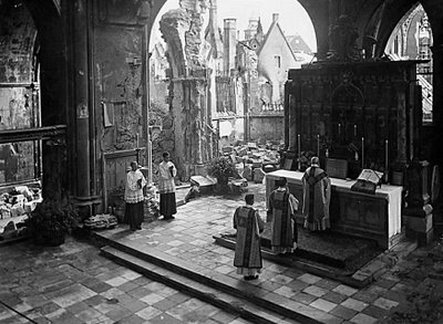 Christendom Restoration Society presents a critical analysis of the crisis of the shortage of priests in the United States. With few exceptions, this serious crisis exists in varying degrees in most Catholic regions throughout the world. While reading this study, bear in mind that the results are not adjusted for population growth. Such adjustment would yield even more disastrous results. The focus of this study is on the crisis of the decline in the numbers of seminarians and priests. Nevertheless, due to the essential and intimate connection between the priesthood and all of Catholic life, both from a practical and supernatural point of view, it is more than reasonable to suspect that the results of a study of all areas of Catholic life would display a similar exponential decay function which we find in the decline of the priesthood. The consequences of the last fifty years go way beyond Catholic communities and affect all of humanity both in practical terms and supernaturally. Consider, for example: the steep decline in the sacramental lives of souls, of baptisms, confirmations, weddings, along with the increase in cohabitation, serial monogamy, and broken families. The moral decay parallels the decline in Catholic vocations. Consider the number of parishes and schools closing and parishes without a priest. Consider the incredibly low average level of knowledge of the Catholic Faith that exists amongst most all Catholics today including the clergy. What if the various religious orders were still available to instruct us? What if the sisters who used to run hospitals were still there for our troubled inner cities? Does anyone wonder why it all began about the same time? Our challenge to the reader is to be realistic. The picture of the future is not bright and indeed can be overwhelming. But as Catholics we know that we must persevere in Faith, Hope, and Charity confident that God is indeed in charge and we need only to do our very best to align our freewill to His, praying to Him through the intercession of the Most Blessed Virgin Mary. A quote that gives me consolation in times of desolation is that of St. Padre Pio, “Pray, Hope, and Don’t Worry!” The study below asks us to engage our hearts and minds beginning, as always, with prayer. To begin, we recommend prayers of reparation to the Most Sacred Heart of Jesus. We suggest you consider as an option a small booklet with the Imprimatur of His Excellency Edward James Slattery, Bishop of Tulsa, OK. entitled: Holy Hour of Reparation to the Sacred Heart of Jesus for Neglect of and Negligence in Priestly and Religious Vocations Click on the above text link to get a copy Seigneur, donne-nous des prêtres! Seigneur, donne-nous de saints prêtres! Seigneur, donne-nous beaucoup de saints prêtres!
An Analysis of the "Shortage of Priests" as Self-imposed by the Catholic Church by David Sonnier I. Introduction Every Fall semester in my introductory programming class the students get a programming assignment involving “information visualization.” They write a program that involves taking a set of data that represents “total enrollment of students in a network of universities” in five year increments from 1920 through the present, and generating a bar chart depicting the data graphically. The students do this by using graphics objects, mostly just rectangles and lines. Their program reads a file containing “enrollment data”, and portrays it, in a loop, as a series of rectangles from left to right. I let them make all decisions regarding style, color, text font, etc., but they are to display the data using some general principles for effective visualization of numeric data. The successful product typically looks like one of the images in Figure 1 below, showing a slow, steady increase from 1920 to 1965 followed by a steep decline from 1965 to the present. Other than the students who are having some difficulty getting the program to run, they usually have comments such as: “Something went wrong in 1965.” “They made some bad decisions somewhere around 1965” “Did they eliminate football in 1965?” Although I don’t normally reveal the source of the data set, it is the total enrollment of seminarians throughout the U.S. from 1920 to the present. [1] The students, uninhibited by preconceived notions and unencumbered by ideology, are willing to acknowledge the point at which something went wrong, that it was due to internal, not external factors, and that, in fact, something actually has gone wrong. II. Background The fathers of the Second Vatican Council met from 1962 to 1965 to engage in a spiritual renewal of the Church, and to find a way to bring the Gospel to people throughout the world by updating the Church to the modern world. From the start there was great emphasis placed on reform of the liturgy, despite the fact that many aspects of the proposed ecclesiastical “reform” had been previously condemned by previous Popes such as Gregory XVI and St. Pius X (cf. Mirari Vos and Pascendi Dominici Gregis). One might think that the much-touted “renewal” in Catholic life ushered in by the Second Vatican Council would have significantly increased the number of priestly vocations. The statistical analysis of data seems to present a drastically different picture. When one expresses concern over the sudden loss of vocations they are answered with assurances that “it’s only temporary,” and “we’re no longer in decline.” It is impossible to reconcile these reassurances with the reality of the situation. Vocations have dwindled to a near-halt in one formerly Catholic region after another. In Ireland a record low of 12 young men entered seminary in 2012. [2] In Belgium only 14 priests were to be ordained in 2014, and in Corsica there is just one young man preparing for ordination. [3] What can we learn from the situation at this point? It will be the aim of this paper to gain a better understanding of the current state of affairs using the available statistics. III. Data and Methodology CARA (Center for Applied Research in the Apostolate) provides some statistics for public consumption, but they only show data subsequent to 1965/1970. [4] With the 2003 publication of Ken Jones' Index of Leading Catholic Indicators, the picture becomes quite clear for those who are willing to see. [1] The113-page paperback book containing statistics relating to all aspects of Catholic life: Catholic education, religious orders, Catholic practice and belief, seminarians, nuns, and diocesan priests going back to 1920. Jones provides us with the data prior to 1965 so that we can compare the trends prior to 1965 with those following 1965. Using primarily these two sources, we take irrefutable, unbiased, and undeniable raw data pertaining to the past and current situation in the Church, and present some analysis of that data. IV. Indicators a. Seminarians in the U.S. Arguably, data depicting the total number of seminarians throughout the better part of the last century is the most significant set of data for understanding the future of the Catholic Church in the United States. The data for figures 3 through 5 comes from Leading Catholic Indicators. CARA does not have public data concerning the total number of seminarians, just “graduate level seminarians” since 1965. Figure 2 represents the total seminarians from 1950 to 2002. Figure 3 seems to indicate that there are essentially two functions: one linear and one exponential. The period prior to 1965 shows a linear increase and the period from 1965 to the present shows an exponential decrease. (1) Prior to 1965: Linear Growth Function The graph for the period prior to 1965 exhibits a period of steady growth, so it was discovered that a linear regression of these four data points could be approximated with a line of slope 829.3, implying that each year between 1920 and 1965, there were approximately 829 seminarians more than there had been the previous year. So every ten years there were approximately 8,293 seminarians more than there had been the previous decade. The growth rate over this period can be expressed as P (for "Preconciliar Growth Rate") as a function of time t, where t is in years and t = 0 in 1920: P(t) = 829.33t + 5093 Or, expressed as a function of the year: P(year) = 829.33 (year - 1920) + 5093 Where the value of year can range from 1920 to the year 1965. Had this trend continued, today in 2014 the total number of seminarians would be approximately 83,050 instead of the approximate level of 5600. Figure 3 depicts the actual data, and superimposed on it is a projection the Preconciliar Growth Function.
(2) Post 1965: Exponential Decay Function It is clear that the period from 1965 onward is nonlinear, so a different technique is required for modeling this period. The exponential decrease from 1965 onward appears similar to a graph of radioactive decay; as it turns out, this period can be modeled by what is commonly called an exponential decay function. Since this period of the Church has been often called the "New Springtime," referring to a glorious era of the Church that was predicted to occur as a result of the Council, we shall refer to this function as the Springtime Decay Function S(t), where S, the Springtime Decay, is a function of time t. We begin by taking the log of each of the data points. This gives us an essentially linear data set, to which we can match a line as we did previously for the Preconciliar Growth Function. Now we exponentiate both sides of our equation obtaining the following function: Or, expressed as a function of the year: Figure 4 shows both the preconciliar growth function and the springtime decay function side by side: Applying this model we find that by the year 2065, 100 years from the beginning of the Springtime Decay process, there will be a total of 10 seminarians in the United States. The half-life of this process is 8.19 years, the approximate period of time it takes for the number of seminarians to diminish by ½. The last two actual data points do not fit the model well, as they are above the exponential decay function. Certainly, according to some, this means that the decline is over, and that all will be back to normal soon. This is wishful thinking, but to provide a more accurate model, we turn to the modified exponential decay model. The Modified Springtime Decay Function is not as simple, but it is more accurate: Or, expressed as a function of the year: According to this modified decay function there will be 779 seminarians in the year 2065 instead of the 10 predicted using the previous model. The difference between this and the previous model is that it has a non-zero asymptote, meaning that the number of seminarians in the United States would eventually converge to 78 rather than zero. b. Lost Vocations One can obtain a rough estimate of the number of lost vocations by taking the sum from 1965 to the year 2000, in five year increments, of the difference between P(year) and S(actual), where the values for S come from the actual data in Jones' "Total Seminarians" table. This estimate makes two assumptions:
According to this rough estimate, approximately 17,741 vocations were lost over the first five-year period, 32,904 were lost over the second five-year period, etc., for a total of 327,746 from 1965 to 2002. I have no formula for the calculation of the number of Catholic souls lost as a consequence of this many potential priests never ordained. c. The Priesthood in the U.S. It quite naturally follows that following from this sudden precipitous decline in seminary attendance there is a gradual decline in the number of priests throughout the U.S. This trend began slowly in the aftermath of Vatican II and continues through the present. The data currently available from CARA, in their “frequently asked questions” section can be used to produce a bar chart, the bleak picture in Figure 6. The data representing the dwindling number of clergy in the US defies a simple analysis. First it must be viewed as part of a larger trend, and to do so we go back to the 1920 population, and use data extracted from Leading Catholic Indicators. The picture becomes clear when compared with the data from the 40-50 previous years (Figure 7). Whereas the graph of the number of seminarians (Figures 1-5) peaked sharply at 1965, the graph reflecting the number of ordained clergy we see a delayed peak, and a very gradual decline beginning approximately at year 1970. Using regression techniques to establish a simple exponential decay pattern, starting in 1970 we find a weak model which may provide misleading results, (Figure 8, Left) but we find a starting point for more realistic models which begins in 1985 (Figure 8, Right). Thus we can base our prediction on the function Where t = 0 in 1985. Following the trajectory of this exponential decay model into the future to 100 years after the conclusion of the second Vatican council indicates that there would be approximately 26,651 priests in the US by then. A similar model using four-parameter logistic curve predicts a similar number, 27,421: Although both models match the data within expectation, both models are flawed. All they have done is find a function that matches the data without giving consideration to the fact that the average age of the current population of priests is 63. [5] If the average priest is 63, the average priest is retiring soon. The drop will be more precipitous, but it is difficult to predict how much. Figure 8 d. Parishes without a Resident Priest Figure 9 depicts the number of parishes without a resident priest over the years, starting in 1945. It is quite clear that between the years 1945 and 1965 the number of such parishes was dwindling, and by 1960 it was as low as 546. In 1965 it was virtually the same, 549, which means that a mere 3% of all parishes didn’t have a resident priest. Today it is 3496 out of 17,483 parishes, which is approximately 20% of all parishes, or one out of five. Clearly, without dispute, the trend prior to 1965 was superior to that following 1965. The trend following 1965 continues. We can use linear regression over the period from 1970 to the present to find a simple linear model for prediction: Where t=0 in 1970. Barring a radical change in course, by the year 2030 there will be approximately 4900 closed parishes in the U.S. Parish closures will become commonplace in most dioceses. A more elaborate, non-linear model predicts 4720 closed parishes in 2030. In either case there is clearly no improvement. V. Analysis and Hypothesis Of the four constitutions, nine decrees and three declarations produced by the fathers of the Second Vatican Council, the first document was the Constitution on the Sacred Liturgy, Sacrosanctum Concilium (SC). There has been a great deal of misunderstanding regarding SC and the intended results. This point is easily made by noting that nowhere in SC, or any other documents of Vatican II, are any of the following questions raised, discussed, or addressed in any way: - Whether or not the Holy Sacrifice of the Mass is to be offered Ad Populum - Whether the Faithful are to receive Communion in the hand or on the tongue - Whether or not the laity can touch the sacred species with unconsecrated hands - Whether Communion is to be received under both species - Whether Communion is to be received kneeling or standing - Whether or not the altar rails were to be removed - Whether or not the Missal published in 1962 was to be forbidden - Whether or not serving at the altar was to now be extended to girls/women - Whether or not the revised Missal would be exclusively in the vernacular While none of these questions were ever addressed anywhere in any documents of the Second Vatican Council, we do find this in the Constitution on the Liturgy: [6] “…there must be no innovations unless the good of the Church genuinely and certainly requires them; and care must be taken that any new forms adopted should in some way grow organically from forms already existing.” (SC, 23) In other words, none of these innovations should have even been considered seriously. There was no basis for any of them, and most of them had been previously condemned. According to Sacrosanctum Concilium the sacred liturgy is the “summit toward which the activity of the Church is directed; and at the same time, it is the fountain from which all her powers flow.” (SC, 10) Since this most intimate (and at the same time, visible) aspect of our Christian lives was subject to unlimited innovation, doesn’t it at least make some sense to assert that the sudden decline in vocations was a direct result of the radicalization of the liturgy? Yet, when one does so one is often accused of inappropriately associating causality between this sudden radicalization and the sudden loss of vocations (post hoc ergo propter hoc). While unlimited innovation and experimentation was permitted after the conclusion of the Second Vatican Council, the one thing that was rarely permitted was “the experiment with tradition,” or openly permitting a diocese, an institute of apostolic life, or even a parish church to embrace a liturgy and spirituality of the type that was the norm prior to the Second Vatican Council. However universal the radical innovations may have once seemed, we now see that there were “pockets of resistance” where people, who we can now admire in the hindsight, knew their Faith well enough to resist the trendy new liturgical fads. Now that Summorum Pontificum is the law of the Church, such an “experiment with tradition” is possible, even common. We can not only see the results, we can quantify them. I propose the following hypothesis: that the degree to which a diocese, a society of apostolic life, an institute, or even a parish Church adheres to the most traditional possible variation of the liturgy and doctrine corresponds to the degree to which we can witness vitality and spiritual life in these same dioceses, societies and institutes. This vitality can be estimated by the fruits of obedience to the Holy Church during a time of confusion: vocations, workers in the vineyard, and specifically priests. VI. A Test of the Hypothesis We should always ask whether a hypothesis can be tested. A proposition is of little use if it cannot be tested. Experiments should be duplicated to see if the same results are obtained every time. This is the only thing that will convince the skeptic, and since we can now quantify, we can discriminate among competing hypotheses. Now that we have had the opportunity, what results do we find? We can view some of the statistics from those seminaries in which the 1962 rite is followed and priests are formed according to preconciliar standards. We can also view statistics from those dioceses in which the norm is a traditional and liturgical orthodoxy that reflects the Church prior to Vatican II. a. Diocese of Arlington, Diocese of Lincoln: Arguably the most damaging of innovations with the liturgy was the introduction of female altar servers. Initially condemned as a “very grave abuse of the liturgy” after Vatican II, it was subsequently tolerated, then finally following a mysterious sequence of events in the early 1990’s it was imposed in most U.S. dioceses. However, the Diocese of Arlington and Diocese of Lincoln both continued the practice of allowing only males to serve at the Holy Sacrifice of the Mass. Figure 10 shows the steady increase in priestly vocations over the past 40 years in the Diocese of Arlington. Statistics from the Diocese of Lincoln are similar, but complicated by the introduction of not one but two seminaries, one for the Diocese of Lincoln and the other for the Priestly Fraternity of St. Peter. Had every Diocese in the U.S. followed these wise examples, there would be no need for this case study. b. Diocese of Ciudad del Este, Paraguay: Under the leadership of a bishop who encouraged his priests to disassociate themselves from politics and instead go about the business of saving souls, and with a healthy application of the provisions of Summorum Pontificum, the Diocese of Ciudad del Este made amazing progress during the years from 2004 to 2014. As of July 2014, there were 250 candidates preparing for the priesthood in this diocese in which almost every parish offers a Mass in the Extraordinary Form. During the past ten years: The number of diocesan priests jumped from 14 to 83 The total number of priests went from 79 to 140 The number of marriages went from approximately 1200 to 6277 The number of Chapels of Perpetual Adoration went from 0 to 8 The number of Baptisms went from 9500 to 21556 The number of confirmations went from 46 to 146 Clearly such a diocese should be considered a model for every other diocese in both North and South America to emulate. Any diocese can take similar steps and reverse the decline within just a few years. c. Franciscan Friars of the Immaculate: The FFI were founded in the province of Avellino, Italy in 1970. In 1990, there were approximately 30 Friars, and they were erected as an institute of diocesan right. On 1 January 1998, Pope St. John Paul II elevated them to an Institute of Religious Life of Pontifical Right. They are present throughout the world, along with the Franciscan Sisters of the Immaculate. They have a special devotion to St Maximilian Kolbe. Following the landmark clarification of the status of what we now know as the Extraordinary Form of the Mass in 2007, Summorum Pontificum, they embraced the traditional Mass on a wide scale. It is clear that they have been successful in attracting vocations to the priesthood (at least up until last year.) [7] d. FSSP: The Priestly Fraternity of Saint Peter, established as a Society of Apostolic Life, which is a community of priests who do not take vows as religious, but who work together for a common mission. That mission is to spread the Gospel within the dioceses in which they are given permission by the local bishop, by the usual means (preaching, catechesis, youth education , etc.) but also by providing sacramental life according to the liturgical books of 1962. As of 2013 there were 407 of these priests, with an average age of 37. A rough projection of the total number of priests, based on the numbers depicted in Figure 12, is provided by a linear model with a slope of 16.28. According to this model there will be 520 priest by 2020, and 682 priests by 2030. Although this does not provide any immediate remediation, it should help provide a sense of direction. Figure 12 (Source: http://www.fssp.org/en/chiffres.htm) VII. Conclusion Several things become evident with this brief analysis:
Pope Benedict XVI comments on the present state of our liturgy in the Preface to The Spirit of the Liturgy: “In fact, it is threatened with destruction, if the necessary steps are not taken to stop these damaging influences… [W]hat is imperative is a new reverence in the way we treat it, a new understanding of its message and its reality, so that rediscovery does not become the first stage of irreparable loss. My purpose in writing this little book… is to coincide with what Guardini wanted to achieve in his own time with The Spirit of the Liturgy… If this book were to encourage, in a new way, something like a ‘liturgical movement’, a movement toward the liturgy and toward the right way of celebrating the liturgy, inwardly and outwardly, then the intention that inspired its writing would be richly fulfilled.” [8] The analysis in this paper provides actual data and interpretation of that data so that we can see the irrefutable truth in the words of Pope Benedict XVI. The words “threatened with destruction” are not empty rhetoric. This threat is real. We can see the Hand of God in the decline of certain institutes, societies, and dioceses, as their decline follows a pattern that is commonly found in nature. Whenever we find an exponential decay function in nature it is typically in conjunction with the death or decay of some entity within His creation. The death of institutes, dioceses and societies throughout the Church in the West is imminent, barring an immediate reversal. At the time Pope Benedict wrote The Spirit of the Liturgy the “liturgical movement” he mentioned was already in its embryonic stages. In the past fifteen years we have seen it grow, develop and flourish. Young men have been inspired by “the right way of celebrating the liturgy,” and abandoned the world for the priesthood, as young men have always done. It is clear that God calls men to the priesthood; His doing so within religious communities that adhere to tradition and orthodoxy seems to be a good indication that He looks favorably upon them and the work that they are doing. ENDNOTES [1] Index of Leading Catholic Indicators: The Church Since Vatican II, Kenneth C. Jones. Oriens Publishing Company, St. Louis, Missouri. [2] “Irish Priestly Vocations in Worrying Decline,” Catholic World Report, October 3 2012. [3] Summarized from Rorate Caeli Blog, (http://rorate-caeli.blogspot.com) with original sources at La Libre Belgique, 22 August 2014 and Riposte Catholic, 23 August 2014) [4] cara.georgetown.edu [5] “US Catholics Face Shortage of Priests”, USA TODAY, May 2014, Dave Breitenstein. [6] Constitution on the Sacred Liturgy Sacrosanctum Concilium, Solemnly Promulgated by Pope Paul VI on December 4, 1963. [7] Ecclesia Dei Delft, www.ecclesiadei.nl [8] The Spirit of the Liturgy, Pope Benedict XVI (Joseph Cardinal Ratzinger), trans. by John Saward, San Francisco: Ignatius Press, 2000, pp. 8-9. 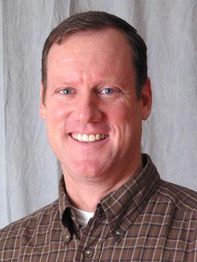 David L. Sonnier is an Associate Professor of Computer Science at Lyon College in Batesville, Arkansas, and a retired Lieutenant Colonel in the United States Army and serves on the Board of Christendom Restoration Society. Other works by David Sonnier include:
Closing Comments: This study included The Priestly Fraternity of St. Peter and the Franciscan Friars of The Immaculate as examples of priestly communities that adhere to a traditional orientation. There are numerous other such priestly communities, many of which are not at this time present in the United States, as well as numerous religious and monastic communities of both men and women. Below is a sample listing of some of the major / international priestly communities. While the drama between them and the Vatican is ongoing, as a matter of justice, we include the Fraternal Society of St. Pius X, founded by the French Archbishop, His Excellency Marcel François Marie Joseph Lefebvre who - along with His Excellency Antônio de Castro Mayer of Campos, Brazil, a few scattered parishes, and other communities and individual priests - always maintained that the Traditional Latin Mass was never abrogated. In 2007, nearly 38 years after the introduction of the Novus Ordo Missae, they were exonerated with the release of His Holiness, Pope Benedict XVI's Summorum Pontificum. Is it not unreasonable, given the extreme crisis in the church, to wonder: "What else might Monseigneur Lefebvre have been right about?" Franciscan Friars of the Immaculate Fraternal Society of St. Pius X Institute of Christ the King Sovereign Priest Institute of the Good Shepherd Personal Apostolic Administration of St. John-Marie Vianney (Brazil only) The Priestly Fraternity of St. Peter JHF © 2011 - 2015 Christendom Restoration Society, Inc. All Rights Reserved
His Imperial and Royal Highness Prince Bertrand of Orleans-Braganza, The Prince Imperial of Brazil to address the 2014 Blessed Karl Event in Washington, DC 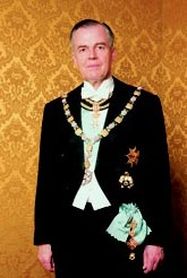 H.I.R.H. Prince Bertrand H.I.R.H. Prince Bertrand Prince Bertrand of Orleans-Braganza, the Prince Imperial of Brazil will speak at a reception following a 7:00 p.m. Solemn High Traditional Latin Mass at St. Mary’s Church honoring the feast day of Blessed Karl of Austria. His Imperial and Royal Highness is a best-selling author, lawyer, pro-life leader, and prominent Catholic layman in the nation with the world’s largest Catholic population. In a rare visit to the United States, he will speak about principles of a Christian social order as seen in the life of Blessed Karl. Prince Bertrand is a cousin of both Emperor Karl and Empress Zita: the three of them descend from the Second Patron of Christendom Restoration Society, King St. Louis IX of France, King St. Ferdinand of Castile, Queen St. Elizabeth of Portugal, and St. Nuno Alvares Pereira, the Lord High Constable of Portugal. As brother of Prince Luiz, the head of the Imperial House of Brazil, Prince Bertrand would be next in line to the throne if the monarchy were to be restored. The Imperial Family was deposed by a military coup in 1889, after Prince Bertrand’s great-grandmother, Princess Isabel, while exercising the function of Regent of the Empire, granted emancipation to all slaves, at great personal risk. A process for her beatification has been opened by the Archdiocese of Rio de Janeiro. Prince Bertrand is very active in the defense of life, the family and private property, speaking out on all issues concerning Christian Civilization. He is founder and leader of the Peace in the Countryside campaign, promoting social harmony in Brazilian agriculture. His book "Psicose Ambientalista" (Environmental Psychosis) has become a best-seller in Brazil. 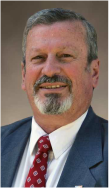 Raymond de Souza, KM Raymond de Souza, KM Other speakers: Raymond de Souza, KM, global Catholic apologist and Christendom Restoration Society Board Member is Brazilian by birth, Catholic by grace and American by choice. He is the Special Missions Coordinator for Human Life International and regularly travels to countries in all continents to represent HLI to refute the culture of death and promote the Gospel of Life. He is also the President of the Sacred Heart Institute in the United States; EWTN program Host (https://www.youtube.com/watch?v=_9vw70_mjh4); Knight of Magistral Grace of the Sovereign Military Order of Malta and Coordinator of the Blessed Karl von Habsburg Catholic Knights’ Network. Raymond has distinguished himself as an international Catholic Pro-Life activist, Apologist, author and broadcaster. Fluent in English, Spanish, French and Portuguese and also having conversational ability in Italian and Afrikaans, he has given over 2,500 talks on issues of Pro-Life, Catholic Apologetics and related topics, in person, on radio and television. His work has assisted religious education programs at parishes, schools, and lay organizations in 15 countries of five continents. He has a syndicated weekly column on Catholic Apologetics in the national Catholic newspaper, the Wanderer. Please visit Mr. d Souza's web site at www.raymonddesouza.com Daniela Petchik, Leader for Juventutem DC Schedule of Events: SOLEMN HIGH TRADITIONAL LATIN MASS, 7:00 PM ST. MARY MOTHER OF GOD CHURCH Site of Shrine to Blessed Karl The Rev. Alfred J. Harris, Pastor 727 Fifth Street, N.W. Washington, D.C. 20001 Metro: Gallery Place/Chinatown Station (Red, Yellow, Green lines) Celebrant: Fr. James Bradley Deacon: Fr. Jacob Straub Subdeacon: Fr. Tyron Tomson Homilist: Fr. Richard Mullins Music: St. Mary's Schola Polyphonic choir: Musikanten, Kerry Krebill, director VENERATION OF FIRST CLASS RELIC RECEPTION AFTER MASS Market-to-Market Café 740 5th Street, Washington, D.C. 20001 (across 5th Street from St. Mary’s) The public is invited. For further information, email [email protected] |
AuthorsArticles submitted by Catholics committed to the restoration of Christendom and the Social Reign of Christ the King. Categories
All
Archives
December 2017
|
|||||||||||||||||||||||||||||||||
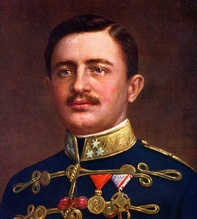
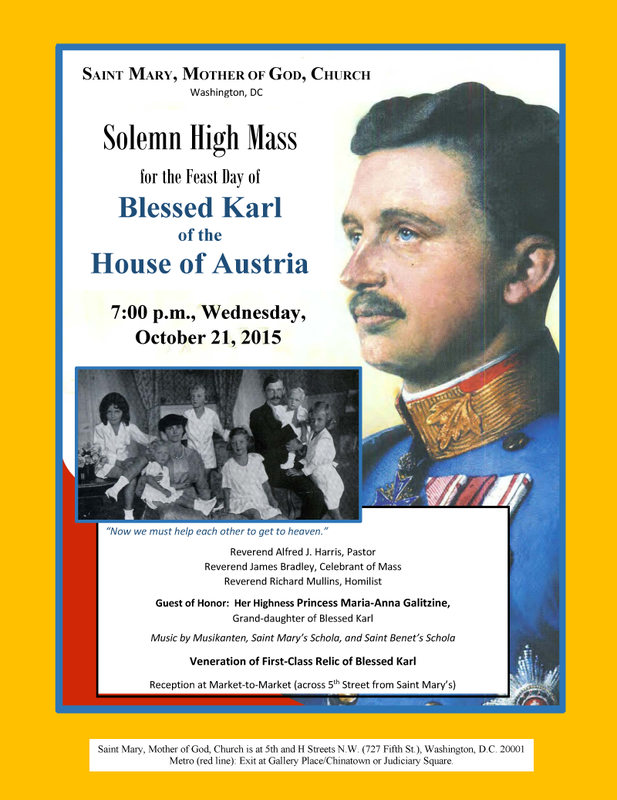
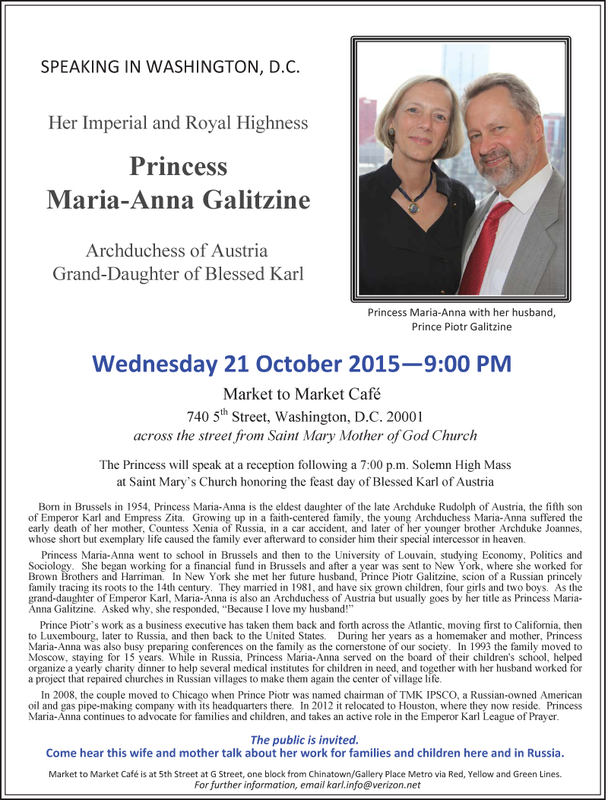

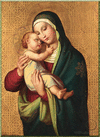



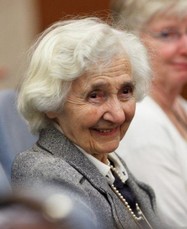

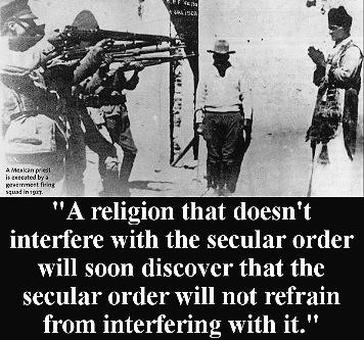

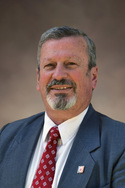
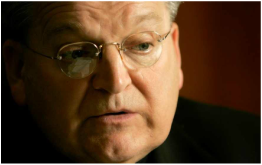

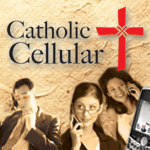

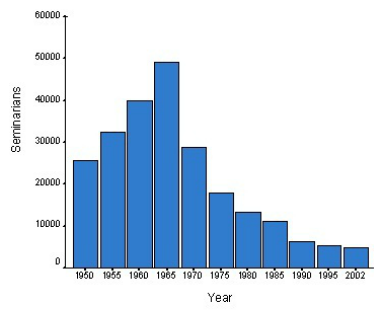
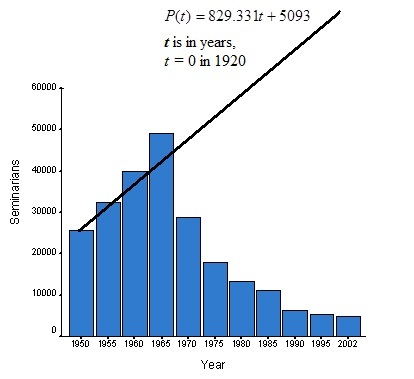


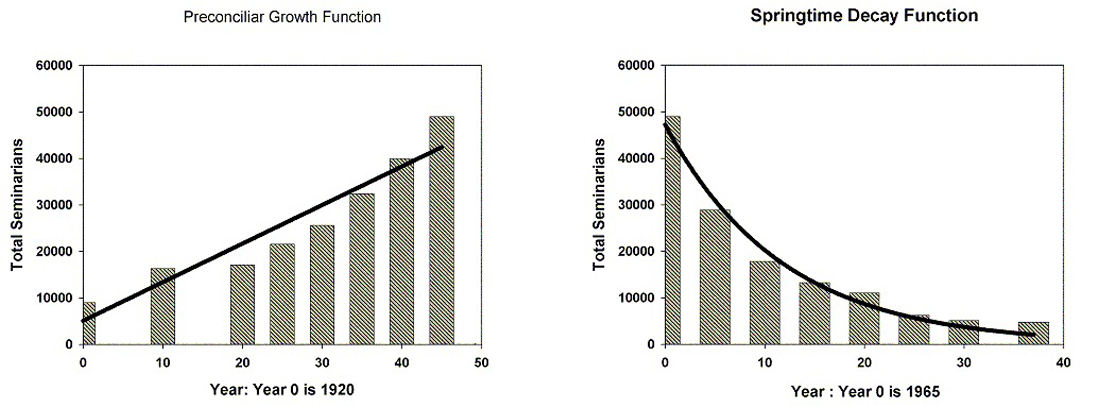


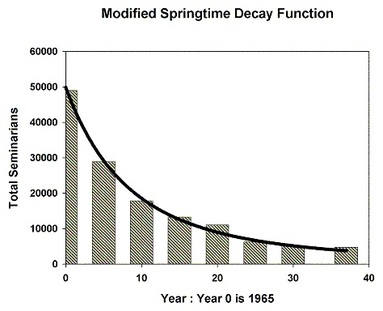


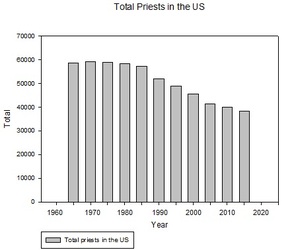
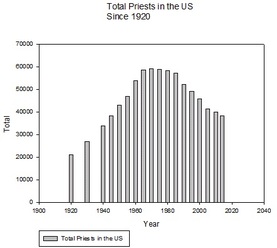


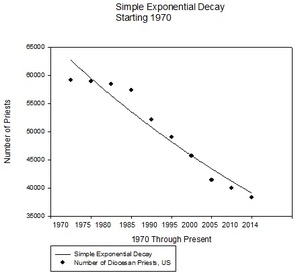
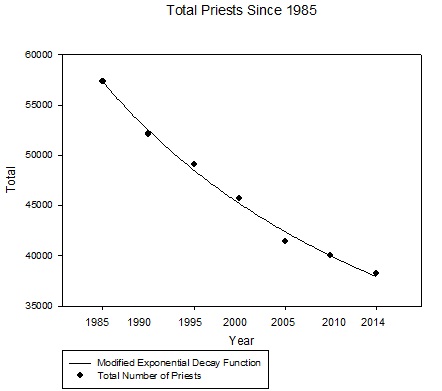

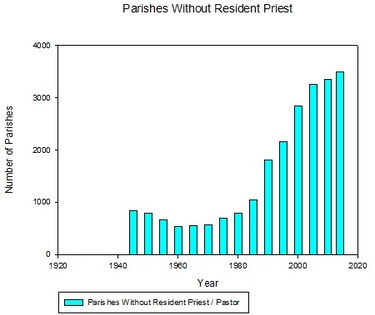
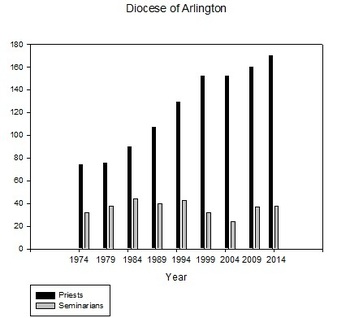
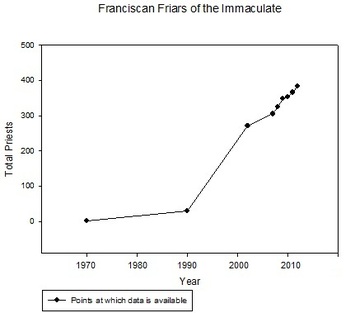
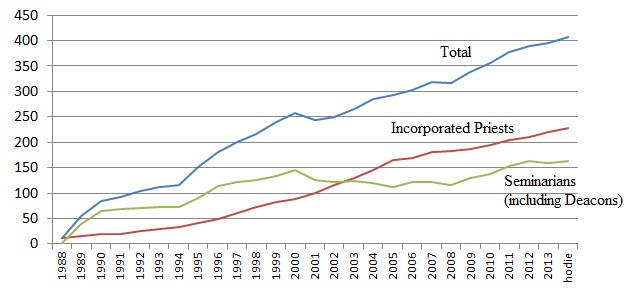
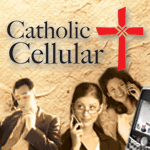

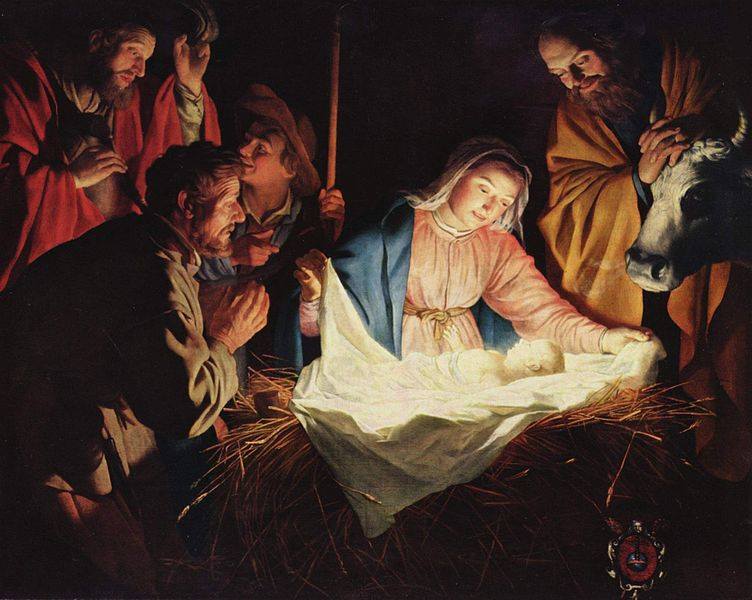

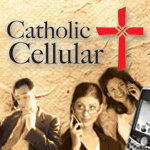
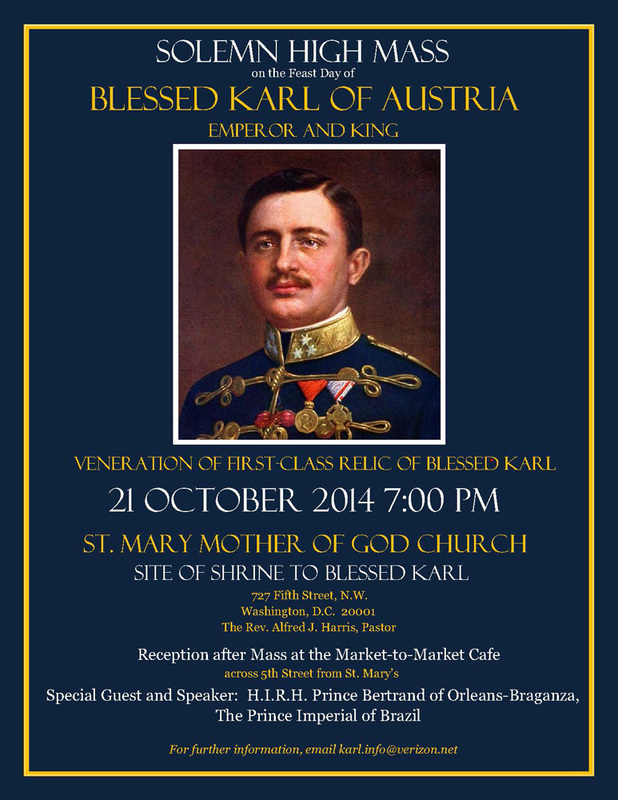
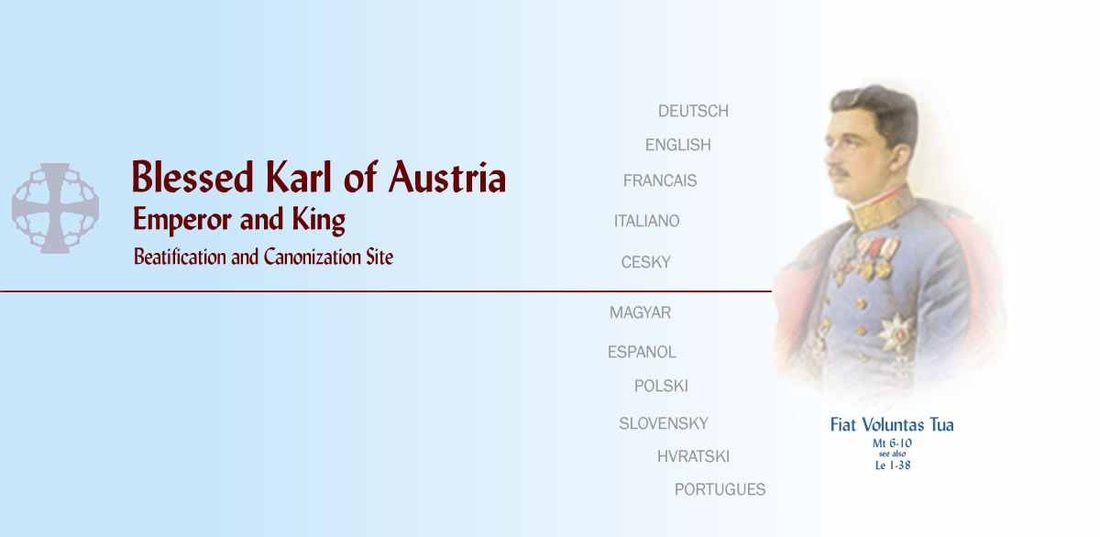

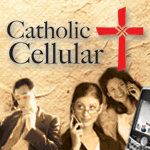

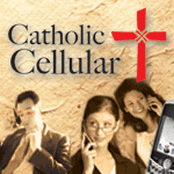
 RSS Feed
RSS Feed